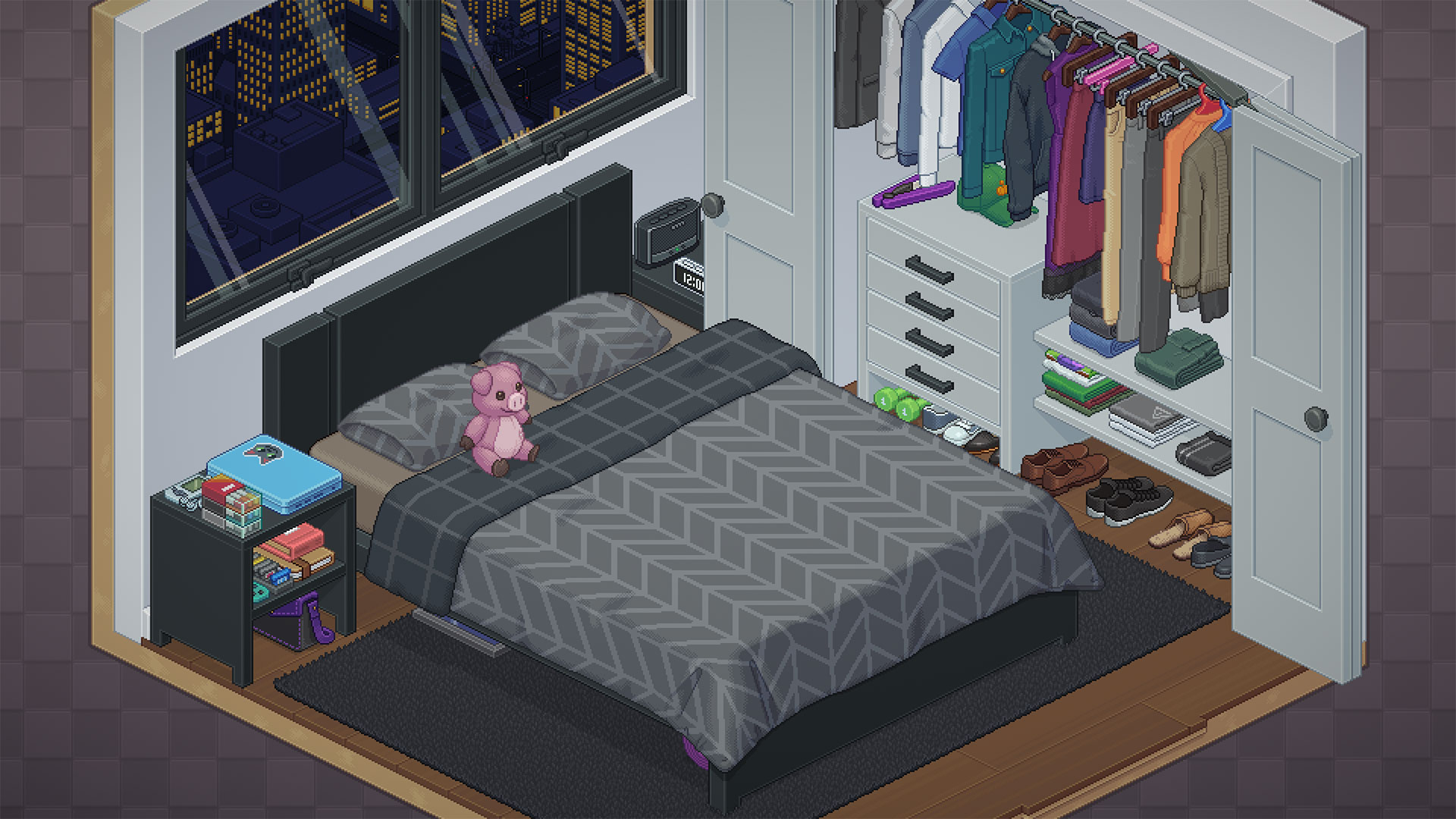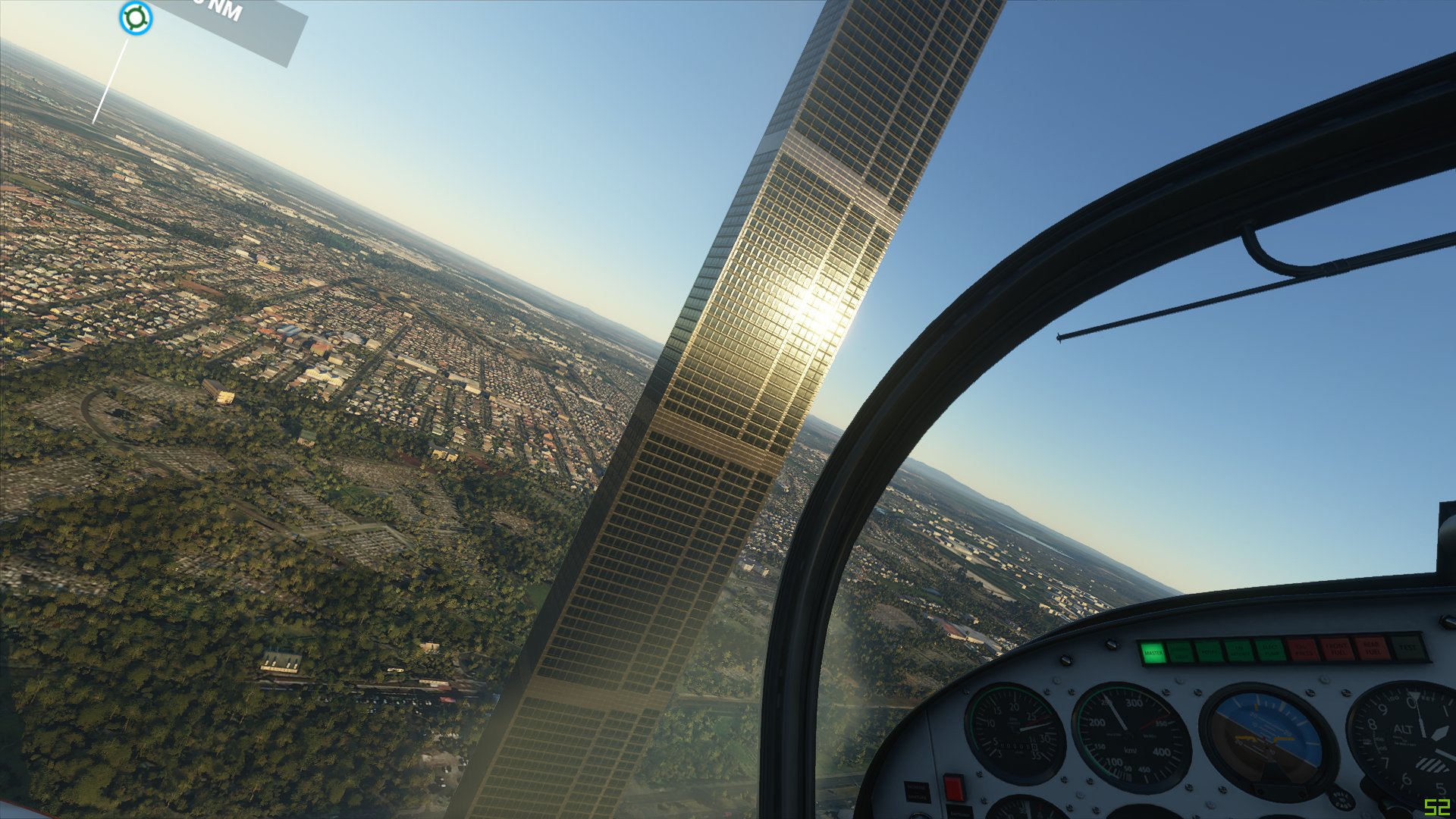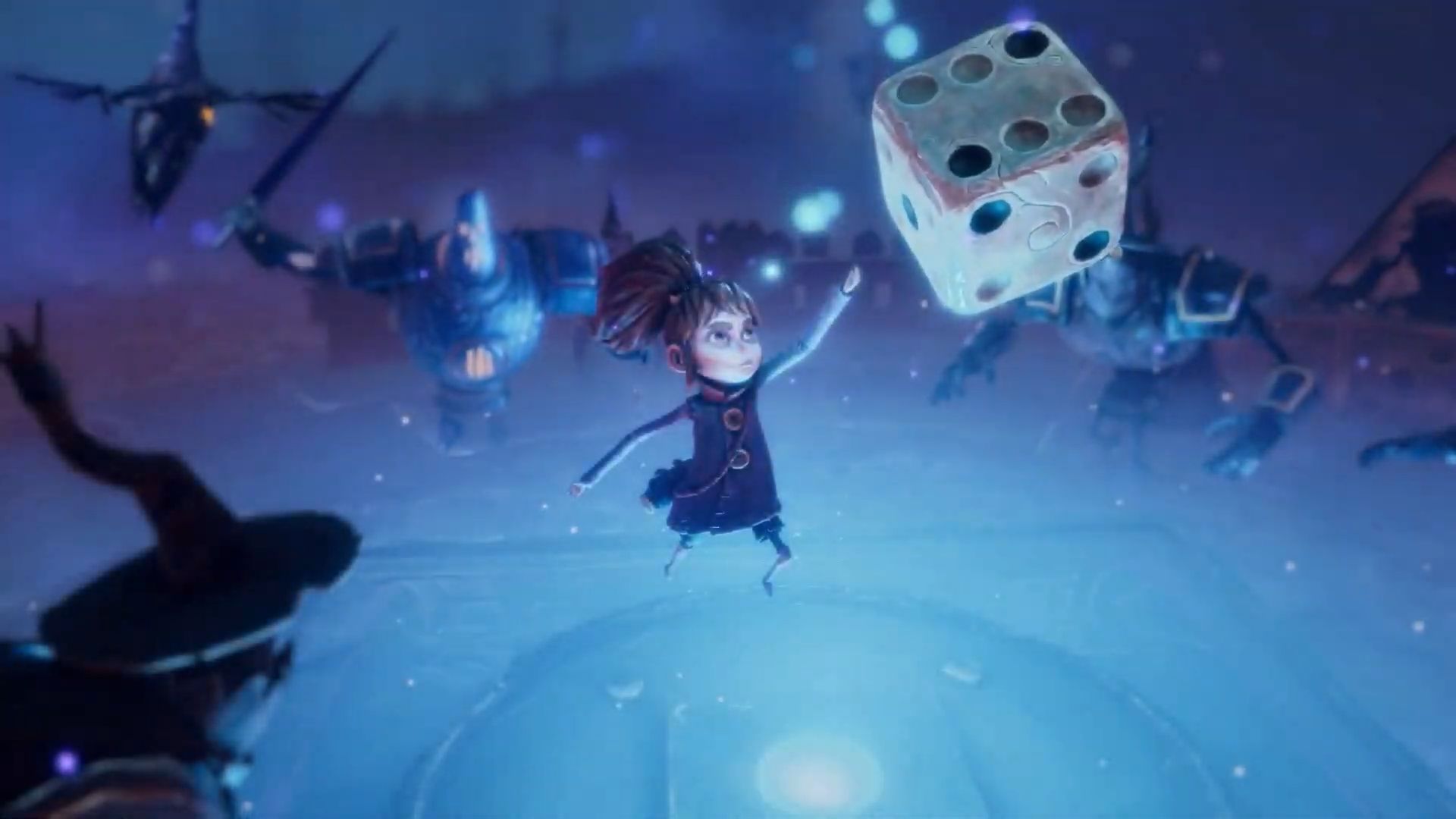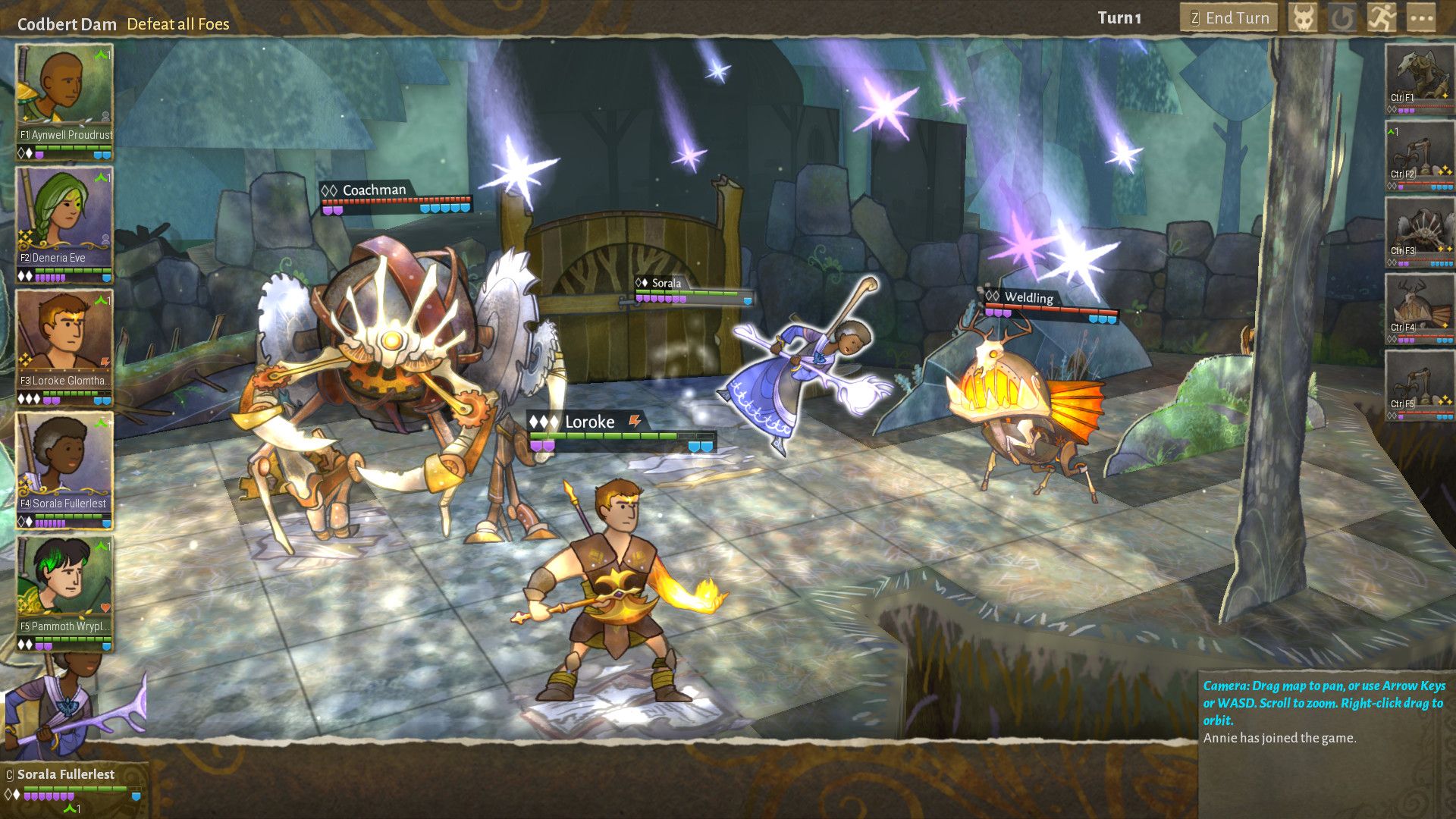7 innovative video game moments that pushed game design forward in 2021

The video game industry is a place of habit – successful themes, conventions and mechanics are continually re-used and re-purposed, and fashionable genres dominate the schedule. But every year, a handful of games try completely new ideas or innovate brilliantly on well-trodden concepts – they give us moments of actual magic, whether that’s the first time Ico and Yorda hold hands, or the moment Psycho Mantis rifles through your PlayStation memory card in Metal Gear Solid.
Here are eight such moments from 2021, taking in quiet scenes of loss, intelligent weaponry, and 200-storey buildings…
The diploma dilemma - Unpacking

With no cinematic cut-scenes or even on-screen dialogue, Unpacking manages to tell a moving narrative about the lead character’s life, solely through the objects they take with them through a series of house moves. But the most poignant moment is when she moves in with what appears to be a boyfriend, who has left little room in his weird minimalist flat for her possessions. When the player tries to hang her highschool diploma on the wall – something she has proudly done in each of her homes – you find there’s no room; the only place it’ll go is under the bed. It’s such a clever, heartbreaking way of conveying an unhealthy, perhaps even abusive, power dynamic in a relationship – and it’s an emotional narrative device that could only be found in a video game.
The mile-high skyscraper - Microsoft Flight Simulator

Can a bug be classed as innovative? It can if it exemplifies a ludicrously ambitious game system. In order to recreate the entirety of planet Earth, Flight Sim developer Asobo combined data from Microsoft Bing, OpenStreetMap, and weather analysis company, Meteoblue, and used artificial intelligence to convert this mass of information into a three-dimensional landscape. For the most part, it’s successful, but when there are mistakes in the source data – for example, when a volunteer coder for OpenStreetMap lists a building in Melbourne as 212 stories high rather than 12, – then the AI has to do its best, with sometimes odd results. Hence, the game’s incredible sky-piercing monolith. When players stumbled across this architectural marvel, it became an unlikely tourist destination, inspiring an army of amateur explorers to search for other weird sites and share them on Reddit forums. In this way, the Flight Simulator world became an unlikely place of emergent folklore, completely unauthored and unintended. This remarkable game is innovative in its use of combined external data sources, but the real magic is in the way it copes, and the fun it generates, when the numbers are wrong.
A space odyssey - It Takes Two

In the Spaced Out section of Hazelight Studios’ co-op adventure, Cody is given the ability to shrink or enlarge himself, while May gets a pair of anti-gravity boots – and together they must navigate a series of spatial challenges to escape the room. The result is a brilliant deconstruction of platforming tropes, mashing up elements of Mario, Sonic, and Rayman, as the players solve simultaneous puzzles that interlock in fascinating ways – including a great section where May jumps on buttons on one side of a ledge, to create platforms for Cody to climb up on the other. Most co-op games simply require players to stand on pads at the same time to open doors, but in this level, It Takes Two does extraordinary things with the idea of collaborative play.
The paintbrush is mightier than the sword - Chicory

In this charming anthropomorphic adventure, you play as a dog who must use a magic paintbrush to bring color to a monochrome kingdom, while hunting down the evil power that’s drained all the life from the landscape. Each little corner of the world is like a coloring book – you don’t have to spend time painting the trees and cottages, but the tools are there for you if you want to, and in this way creativity exists beside narrative storytelling in completely unique way. The brush itself is also cleverly multifaceted - you paint with it, but its touch can also shrink or grow scenic objects to provide access to new areas. It is a key and a cursor as well as an art tool. Game characters in role-playing games usually carry swords and the paint brush provides a brilliant counter to that – it gives life rather than taking it.
The *really* smart gun - Returnal

Housemarque’s timeloop shooter is such a smart, well-designed game, but it’s the use of Sony’s new DualSense controller that really impresses. When you unlock a secondary fire mode, you select between the two options by pushing the left trigger halfway down for one, or all the way for the other. To make this more comfortable, the game uses the adaptive trigger tech to provide a physical stop between the two – you have to exert some real pressure to get the alt-fire mode. It’s simple, but intuitive and pleasingly physical, giving you the impression of using a real weapon. It’s also a really neat, immersive way of using haptic feedback, not just as a sensory novelty, but as a way of streamlining the controls – otherwise the alt-fire option would need a separate button assignment. Add in the use of the controller speaker for an array of effects and Returnal really draws the player into the game world.
Weekly digests, tales from the communities you love, and more
Magic and mechanics - Lost In Random

This offbeat Tim Burton-esque adventure cleverly takes the idea of dice rolls – which are usually an abstract and systemic element of gameplay - and makes them a central, naturalistic part of the narrative. The lead character, Even, carries a magical anthropomorphic dice with her, physically rolling it during combat to unlock a range of attacking and defensive moves. A card battle element is also employed to add a tactical component, and again these cards are a tangible product in the game world. Not only is this just a fun way to combine different fighting mechanics into one game, but it also makes everything feel cohesive, magical and alive.
The myth machine - Wildermyth

A turn-based combat strategy game with a fantasy adventure narrative Wildermyth is brilliant in its combination of scripted stories with procedurally generated scripts and scenarios. The player takes groups of characters from their modest beginnings as wannabe warriors to veteran heroes and on to their deaths – and then the next generation takes over. The way that every players gets their own different version of these fable-like narratives perfectly replicates the imaginative richness of tabletop role-playing games. Wildermyth is a game about the joy of telling tales, and the evolving nature of myths, and fittingly then, its most wonderful, innovative moments will be different for everyone.
Keith Stuart is an experienced journalist and editor. While Keith's byline can often be found here at GamesRadar+, where he writes about video games and the business that surrounds them, you'll most often find his words on how gaming intersects with technology and digital culture over at The Guardian. He's also the author of best-selling and critically acclaimed books, such as 'A Boy Made of Blocks', 'Days of Wonder', and 'The Frequency of Us'.


